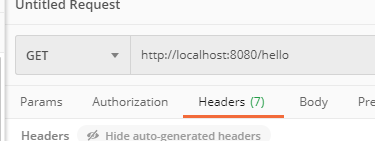P.22-认证配置详解、P.23-权限系统的作用、P.24-授权基本流程
P.22-认证配置详解
在SecurityConfig下进行修改
@Configuration
public class SecurityConfig extends WebSecurityConfigurerAdapter {
//创建BCryptPasswordEncoder注入容器
@Bean
public PasswordEncoder passwordEncoder(){
return new BCryptPasswordEncoder();
}
@Autowired
private JwtAuthenticationTokenFilter jwtAuthenticationTokenFilter;
@Bean
@Override
public AuthenticationManager authenticationManagerBean() throws Exception {
return super.authenticationManagerBean();
}
@Override
protected void configure(HttpSecurity http) throws Exception {
/*http
//关闭csrf
.csrf().disable()
//不通过Session获取SecurityContext
.sessionManagement().sessionCreationPolicy(SessionCreationPolicy.STATELESS)
.and()
.authorizeRequests()
// 对于登录接口 允许匿名访问
.antMatchers("/user/login").anonymous()
// 除上面外的所有请求全部需要鉴权认证
.anyRequest().authenticated();*/
http
//关闭csrf
.csrf().disable()
.sessionManagement().sessionCreationPolicy(SessionCreationPolicy.STATELESS)
.and()
.authorizeRequests()
.antMatchers("/hello").permitAll()
.antMatchers("/user/login").anonymous()
.anyRequest().authenticated();
http.addFilterBefore(jwtAuthenticationTokenFilter, UsernamePasswordAuthenticationFilter.class);
}
}
修改后我们通过登录后我们是否携带了token去访问hello页面都是可以访问到的

token就是我们登录后是否要携带的token

再访问hello页面

携带token


没有携带token进行登录


修改后不论我们是否携带token去访问hello页面都可以访问到
P.23-权限系统的作用
例如一个学校图书馆的管理系统,如果是普通学生登录就能看到借书还书相关的功能,不可能让他看到并且去使用添加书籍信息,删除书籍信息等功能。
但是如果是一个图书馆管理员的账号登录了,应该就能看到并使用添加书籍信息,删除书籍信息等功能。
总结起来就是不同的用户可以使用不同的功能。这就是权限系统要去实现的效果。
我们不能只依赖前端去判断用户的权限来选择显示哪些菜单哪些按钮。
因为如果只是这样,如果有人知道了对应功能的接口地址就可以不通过前端,直接去发送请求来实现相关功能操作。
所以我们还需要在后台进行用户权限的判断,判断当前用户是否有相应的权限,必须具有所需权限才能进行相应的操作。
P.24-授权基本流程
在SpringSecurity中,会使用默认的FilterSecurityInterceptor来进行权限校验。
在FilterSecurityInterceptor中会从SecurityContextHolder获取其中的Authentication,然后获取其中的权限信息。
当前用户是否拥有访问当前资源所需的权限。
所以我们在项目中只需要把当前登录用户的权限信息也存入Authentication。 然后设置我们的资源所需要的权限即可。



 浙公网安备 33010602011771号
浙公网安备 33010602011771号